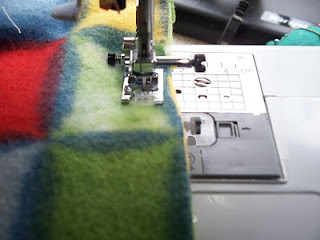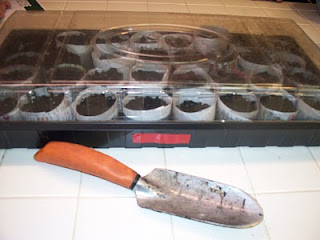The ingredients for savings!
Making your own laundry soap sounds like one of those hard-core cheap-o things to do that only the fanatics among us would attempt. Once I started making my own, however, I found that it is amazingly easy, astoundingly cheap, and cleans my laundry better than store-bought detergents.
You will need:
One bar pink Zote soap. This is a laundry soap formulated for easy grating and good cleaning and brightening.
1 1/2 cup baking soda
1 1/2 cup borax
(Note: These amounts will make enough to fill an old one quart yogurt container, which is where I store my soap.)
Grate a third of a bar of Zote into a bowl (I have an old plastic bowl that was retired to the laundry for just this purpose, which is what you see below. No artificial "stunt photography" here!)
Zote is a very soft soap that grates easily with a vegetable grater. Keep the bar well wrapped so it doesn't dry out between uses, as the harder soap is more difficult to grate.
Add baking soda and borax, and mix. Store.
You will use only about a tablespoon per load, so this stuff lasts forever. Experiment until you find the right amount for your washer, but don't overdo. Excess soap will lay in the soap tray if you overload it.
I started using this just on towels, then moved on to underwear, jeans, and finally all of my laundry. (Full disclosure: I "treat" my black laundry to a special dark fabrics detergent, even though I've never noticed my homemade soap causing any fading.) Hubby notes that workout clothes washed in the homemade variety don't smell "sour" after wearing, like they do with commercial detergents. Plus, I think the clothes look cleaner, and they definitely smell outdoor clean without having a perfume smell.
The Analysis
Fast: It takes about 10-15 minutes to make a batch of laundry soap. Not a big investment in time to save a lot of money!
Cheap: I knew this was inexpensive, but I didn't realize how cheap until I did the math:
Zote: One bar is $0.99, so a third of a bar is $0.33.
Baking Soda: A 64 oz box is $1.99, so a cup and a half is $0.37.
Borax: A 76 oz box of 20 Mule Team Borax is $3.99, so a cup and a half is $0.63.
Total: $1.33 for a full quart container of laundry soap.
Good: Cleaner, better smelling clothes, no detergents in the waste water stream, no big empty plastic bottles in the landfill (recycle those cardboard baking soda and borax boxes).
















